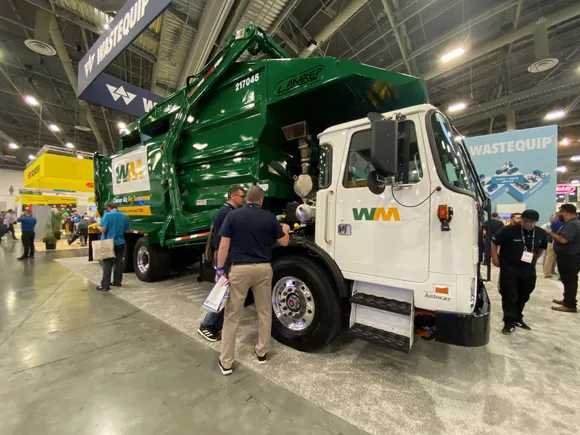WM Leadership Transition and Technological Advances
John Morris, WM’s new President and COO, recalls his experiences driving waste vehicles during college, a time when drivers often rode on the back of trucks and windows were the only source of ventilation.
Now overseeing field operations, Morris manages a fleet of over 18,000 vehicles equipped with advanced technologies for enhanced safety and efficiency. He remarks, “The technology in these trucks is vastly superior to what it used to be.”
Vision for WM’s Future
Recently named president, Morris will continue his previous field operations responsibilities. Executives in areas such as sustainability and customer experience will now report to him, bringing a wealth of experience from his previous roles in New York City, Mid-Atlantic, and as Chief Strategy Officer.
Morris emphasizes WM’s strategic approach to technology adoption to reduce labor dependency while ensuring employee safety and comfort. He acknowledges that while sophisticated vehicles are costlier to maintain, their long-term benefits are worth the investment: “Our priority is safety, but we also aim for profitability.”
Artificial Intelligence and Operational Efficiency
In a discussion during WasteExpo, Morris discusses the integration of AI into WM’s operations. AI has been utilized for several years, automating tasks such as sorting in recycling facilities and improving safety by monitoring driving behaviors.
Morris notes that cameras and AI now capture data during service transactions, providing insights into customer behaviors and safety issues. “This technology allows us to coach our drivers positively instead of disciplining them,” he explains, highlighting the importance of utilizing AI to enhance efficiency.
Dynamic Routing and Future Technologies
WM is enhancing its routing processes, developing tailored software for waste operations. This new software accounts for numerous variables, increasing efficiency and reducing the risk of incidents. Additionally, Morris underscores the importance of making in-cab technology more passive to allow drivers to focus on servicing customers safely.
Budgeting for Technological Improvements
Morris discusses the significance of understanding the total cost of operation in budgeting for technology. With the continuing challenge of labor scarcity, he believes investments in technology are necessary to modernize the business model and reduce costs over time. He foresees ongoing labor shortages impacting the industry and emphasizes the need for innovative solutions.
Looking Ahead: Autonomous Vehicles
WM is currently piloting autonomous technology in remote operations, which could alleviate labor shortages. While the full integration of autonomous vehicles in residential areas may take longer, Morris believes there is potential for autonomous heavy machinery in waste operations soon.


